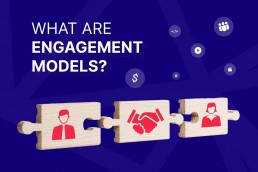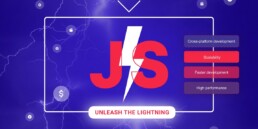The term engagement model is something that will come up in the very beginning stages of each project or cooperation. Catching up to what is what in this topic is vital for every informed business decision that may come up. It may sound like a subject that needs a lot of research, so we have prepared a short introduction to the topic to help you grasp all of the most important concepts.
What is an engagement model
The specificity of the IT industry and each operation involved require detailed rules and guidelines to distinguish the roles between partners, clients, and development teams in the project. The engaged parties need to have a basis for their cooperation and a pre-set contract can be referred to at times of any problems or misunderstandings – that is what an agreed engagement model provides.
Types of engagement models based on Better Software Group’s operations
Nearshore/Offshore
We can distinguish two particular basic models (both of which can also be mixed) where the development teams can be on or off-site of the client’s workplace. They act as an extension of the client’s in-house crew efficiently supplying the lacking stuffing and expertise. The operation is time and material based accounted for each set milestone or release.
Staff Augmentation
The term itself refers to a more complex engagement model which includes in its description one of the basic ones mentioned before. It’s offshore based, meaning that the specialists do not join the client in person but can operate remotely from different places. The interested party can supplement its force with whole specialized teams or individual experts and then manage them accordingly successfully scaling up or down the team as needed.
Build, Operate, Transfer
Which is the creation of the entire development center that will be utilized by the client. The costs are transparent from the get-go and the team can be responsible for complete operations support including offices, infrastructure, legal etc. The delivery of fully equipped specialists significantly lowers the costs and time of all tasks but also omits the need for non-efficient recruitment and training processes.
Fixed price projects
The fixed price model can be associated with a defined scope and timeline which are set at the very beginning and are fully transparent for all parties. The project is to be done up to an agreed date and without surprising additional costs as agreed in the signed contract. Each stage can be easily monitored and adjusted if any problems occur. It usually bases on Agile methodologies with capped time and material, target cost and graduated fixed price.
Support and maintenance
Each project needs to be continuously monitored, checked and upgraded over time but what if you don’t have adequate specialists even after the solution is finished? Then you can rely on the support and maintenance model which entails delivering all of the above by the development team and company. It allows for business quality assurance as the project and the maintenance are done by the same company knowing the project fully. Small components can be also added over time to upgrade the solutions.
How to select the right one for you and your project
The first step to choosing the right engagement model for you is learning how they differ from each other, which you already began doing with this article. To get even more information you can always ask the company you are interested in how they can operate (we are also always happy to discuss the topic further), the more details you can get the more informed choice you can make. After settling on the type and overall scope of your project you can match it with the most fitting solution for your case. Focus on our in-house expertise, the complexity of the solution needed, the technological gaps, the management you would prefer, the time frame, budget and costs as your guideline. Make sure that you understand each step of the proposed process and that it matches right with your goals, as simple and as hard as that.
To summarize – BSG’s advice corner
• Always focus on your needs and if the offered model meets them
• Learn as much as you can about the company’s offer
• Rely only on experts that meet the highest standards
• Stay informed and interested during the development process
• Resolve any problems according to the contract and without rushing, explain in detail what you expect
• At the end it is all about you, your project and your satisfaction, if something is not up to your liking, let the company know early so it can be fixed
If you find this article valuable, you can share it on social media →
Read more about the UX/UI subject!
July 20, 2023
The Importance of UX in HbbTV app development
HbbTV plays a significant role in the interactiveness and content enrichement. Care for UX makes it shine, but why?
June 29, 2023
LightningJS takes the development world by storm, but why?
The pursuit of discovering new, powerful tools lead to the rise of Lightning JS. What are the benefits of this popular TV app framework?
September 29, 2022
OTT app creation – how to deliver amazing viewing experiences
It is easy to fall for the branding and advertising so let’s dive into crucial topics for delivering exquisite viewing experiences with every OTT…
Are you looking for a company, that will help you build a TV app?
Leave your email and a short description about your project. We would gladly discuss different cooperation possibilities!





